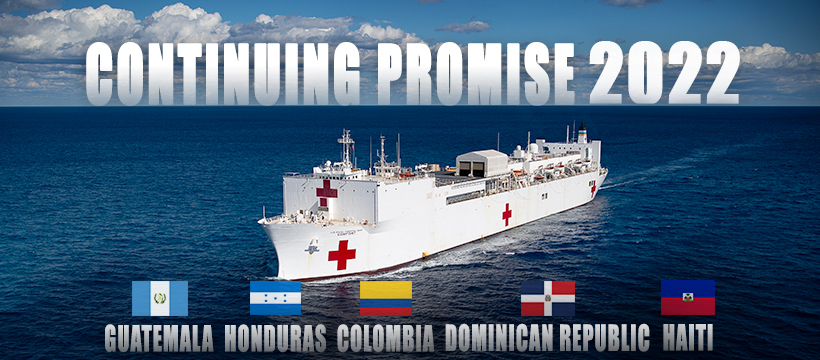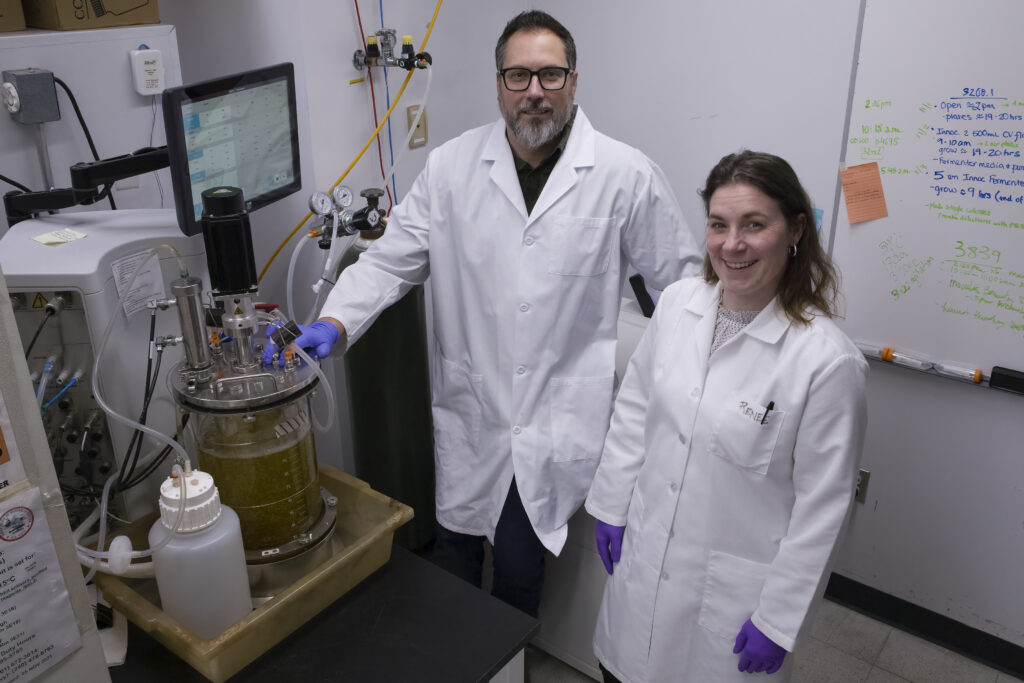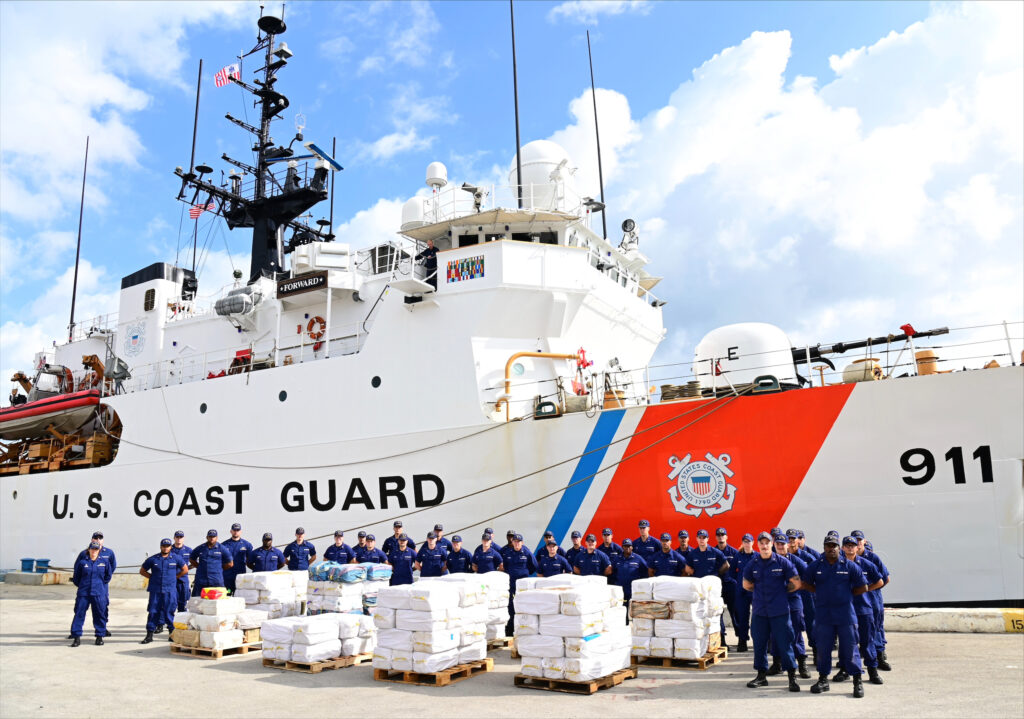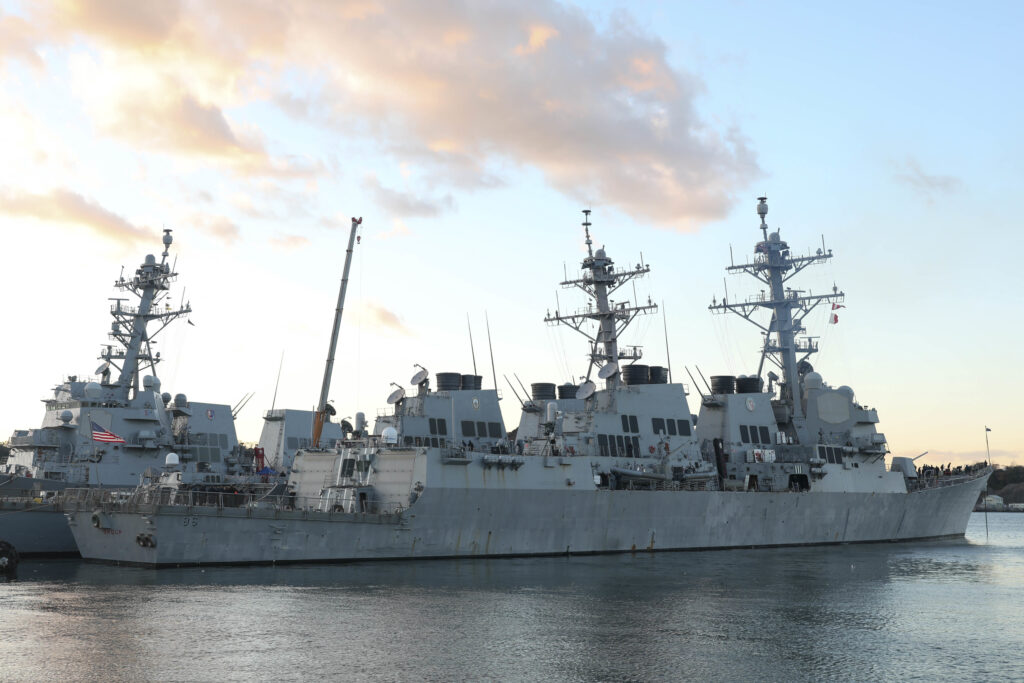USNS Comfort Completes 12th Iteration of Continuing Promise 2022

NORFOLK, Va. — The hospital ship USNS Comfort (T-AH 20) returned to its homeport in Norfolk, Virginia, concluding Continuing Promise, Dec. 21, 2022, said Mass Communication Specialist 3rd Class Deven Fernandez, U.S. Naval Forces Southern Command / U.S. 4th Fleet, in a release.
The Continuing Promise 2022 team worked collectively with participating host and partner nations to enhance regional interoperability and disaster response capabilities, increase security and stability in the region, and foster new and enduring friendships in Caribbean, Central and South American region.
Comfort visited Guatemala, Honduras, Colombia, Dominican Republic and Haiti throughout the mission. The crew aboard Comfort included U.S. military and civilians, more than a dozen non-governmental organizations and military members from Brazil, Canada, Chile, Colombia, Dominican Republic, Ecuador, Honduras, Netherlands and United Kingdom.
Continuing Promise 2022 saw more than 13,000 patients, participated in more than 25 subject matter expert exchanges, conducted five humanitarian assistance and disaster relief workshops, shared in 18 Women, Peace and Security initiative events and partook in 11 community relations engagements.
“I am so delighted to have shared this remarkable experience with the men and women of the Continuing Promise 2022 team,” said Capt. Kathryn Elliott, commanding officer of the Medical Treatment Facility aboard the hospital ship USNS Comfort (T-AH 20). “We overcame adversity to provide medical care to the community in these host nations. Along the way we learned so much from our partners. The exchange of information that took place was vital to building upon our long-lasting relationships with the countries of this region. This is Comfort’s mission and a true continuing promise.”
Over the course of the 2-month mission, there were many accomplishments by the Comfort team. Here are a few of the highlights from Continuing Promise 2022.
Puerto Barrios, Guatemala
Oct. 26 – Oct. 31
• 44 surgeries conducted
• 2,957 prescriptions filled
• 7 concerts performed by the U.S. Fleet Forces band
• Pediatric cardiology care provided, which is not available in the area
• Provided life changing surgeries, such as receiving full use of hands
Puerto Cortes, Honduras
Nov. 1 – Nov. 7
• 23 surgeries conducted
• 3,350 prescriptions filled
• 7 concerts performed by the U.S. Fleet Forces band
• Held refresher course of BLS for the volunteers at the Red Cross
• Refurbished local school in Puerto Cortes
Cartagena, Colombia
Nov. 11 – Nov. 20
• 143 surgeries conducted
• 7,012 prescriptions filled
• 6 concerts performed by the U.S. Fleet Forces band
• Refurbished local school by adding a new coat of paint
• Supported embassy in the handover of materials to local community
Santo Domingo, Dominican Republic
Nov. 27 – Dec. 6
• 87 surgeries conducted
• 7,446 prescriptions filled
• 137 patients received physical therapy treatment
• 209 X-Rays taken
• 78 Ultrasounds performed
Jeremie, Haiti
Dec. 11 – Dec. 17
• 14,012 prescriptions filled
• 1,035 patients seen
• 55 pallets of medical supplies and other goods donated
Since its inaugural mission in 2007, Continuing Promise missions have treated more than 595,000 patients and conducted over 7,250 surgeries in the region. The successful completion of the mission marks the end of the 12th Continuing Promise.
U.S. Naval Forces Southern Command/U.S. 4th Fleet supports U.S. Southern Command’s joint and combined military operations by employing maritime forces in cooperative maritime security operations to maintain access, enhance interoperability and build enduring partnerships in order to enhance regional security and promote peace, stability and prosperity in the Caribbean, Central and South American region.







